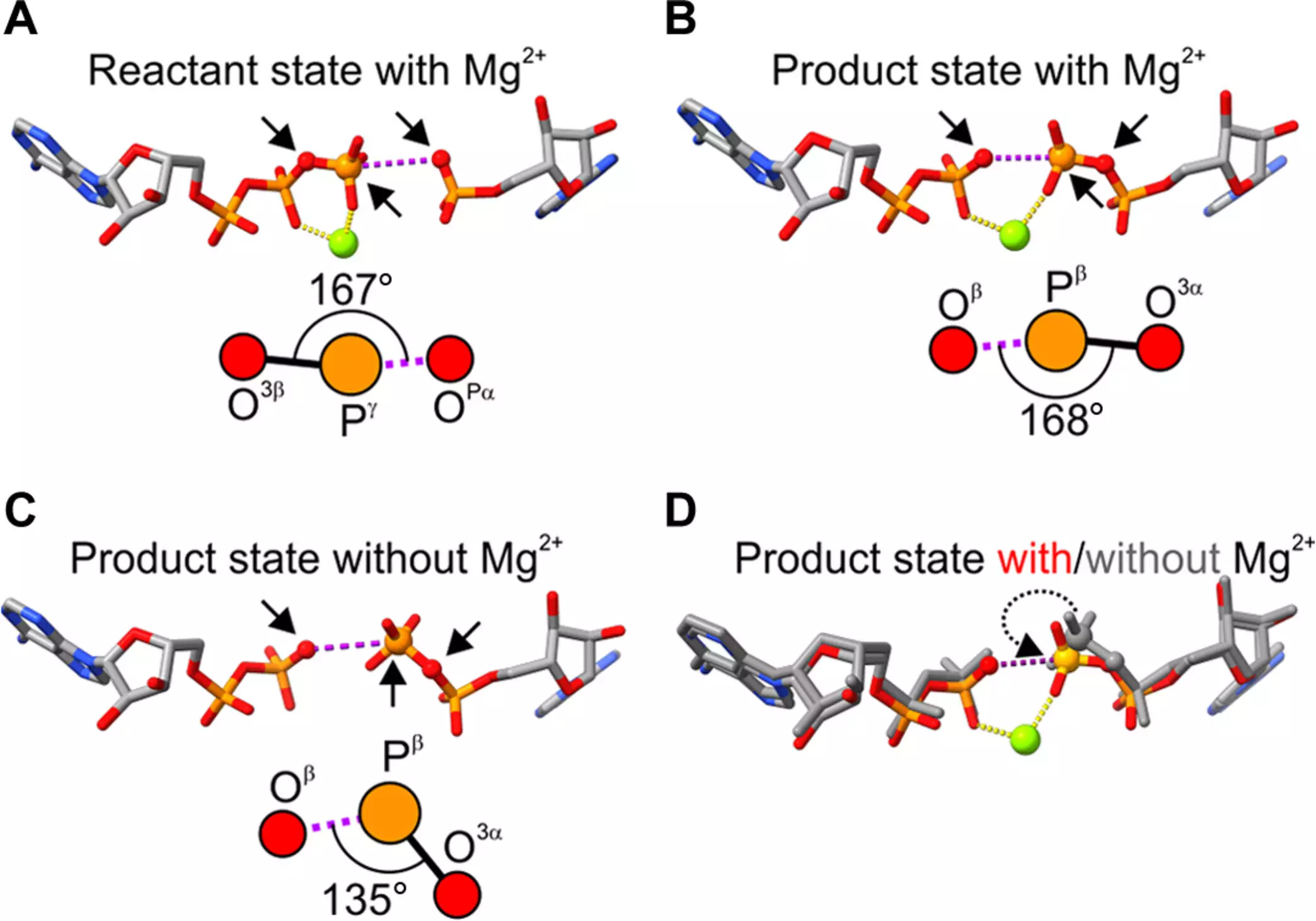Adenosine triphosphate (ATP) is often hailed as the energy currency of the cell. Its significance spans various biological processes, from muscle contraction to cellular communication and metabolism. For any organism to thrive, the continuous generation of ATP is paramount. A recent study led by an international team, headed by Professor Magnus Wolf-Watz from Umeå University, reveals critical insights into the molecular mechanisms governing ATP synthesis, specifically emphasizing the pivotal role of magnesium ions. This discovery not only enhances our comprehension of biological chemistry but may also lead to innovative approaches in medical and biotechnological applications.
The production of ATP occurs primarily through the action of the enzyme adenylate kinase, which facilitates the conversion of adenosine diphosphate (ADP) and adenosine monophosphate (AMP) into ATP. One of the intriguing aspects of this enzymatic process is the dependence on magnesium ions. Previous research has identified magnesium’s role as a catalyst through electrostatic interactions; however, this alone does not account for the efficiency required for ATP formation. The current research sheds light on how magnesium atoms not only participate in the reaction but also play a crucial geometric positioning role that significantly influences the enzyme’s functionality.
Understanding the subtleties of enzyme mechanics, particularly in how substrate molecules are positioned, is vital for grasping how reactions occur with maximum efficiency. The newly published study illustrates that for the adenylate kinase-catalyzed reaction to proceed effectively, AMP and ADP must be aligned in highly specific geometries. It was discovered that the magnesium ion serves as a facilitator, inducing an angle adjustment that optimally positions these substrates within the enzyme’s active site. These findings highlight the intricate dance of molecular components that is essential for life at the cellular level.
The research team utilized advanced crystallographic techniques and computational chemistry to decipher these complex interactions. By observing the changes in angles through crystallographic images compiled by Professor Elisabeth Sauer-Eriksson, the team could directly correlate these geometric adjustments with alterations in the enzyme’s structural conformation. Simultaneously, Kwangho Nam’s computational chemistry efforts at the University of Texas at Arlington lent significant depth to the study by simulating the physical transformations that the enzyme undergoes in real-time. This methodological synergy illustrates a comprehensive approach to exploring biochemical phenomena, offering a deeper understanding of catalysis.
The implications of this research are profound, extending beyond mere academic curiosity. By illuminating how subtle geometric changes can yield substantial catalytic effects, the findings pave the way for novel therapeutic strategies aimed at modulating ATP production in various conditions, including metabolic disorders and infections. Given that ATP synthesis is vital in many cellular processes, understanding its mechanics could lead to innovations in drug development and enhanced biomaterials design.
This study underscores the importance of magnesium ions in biological chemistry, a facet that had previously eluded comprehensive understanding. By bridging the gap between enzyme structure and function, it sets the stage for future research exploring the role of metallic ions in catalysis. As biochemistry continues to evolve, the insights gained from this research will be invaluable in harnessing the power of ATP production, offering exciting avenues for both scientific inquiry and practical applications. Understanding how life’s fundamental energy processes are fine-tuned at the molecular level enriches both our knowledge of biology and our capacity to manipulate these processes for health and technological advancements.

